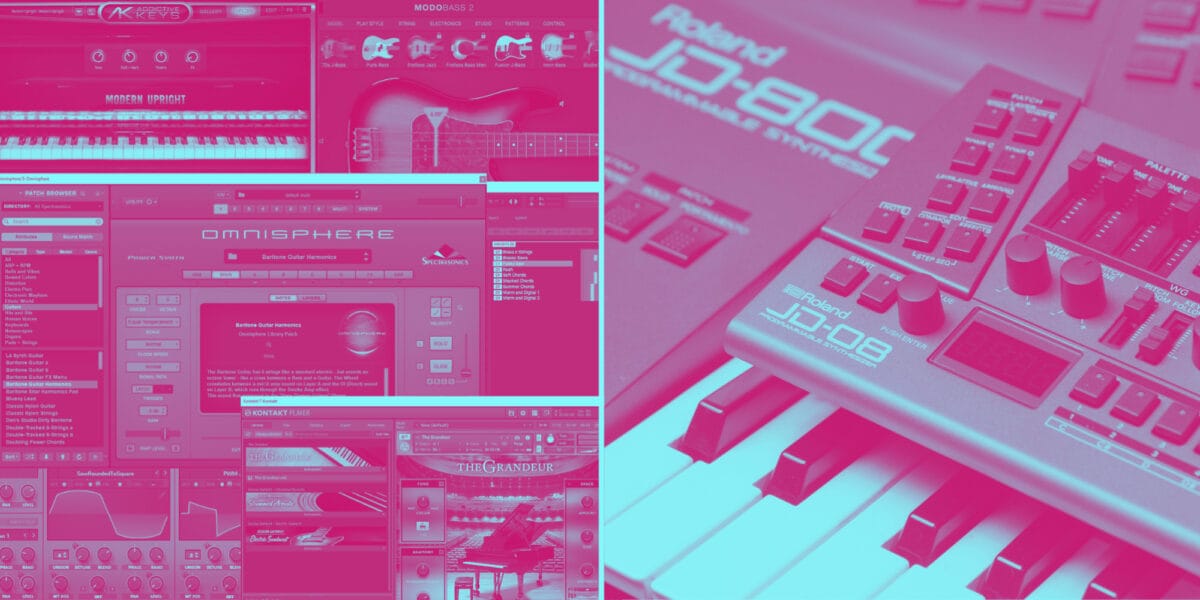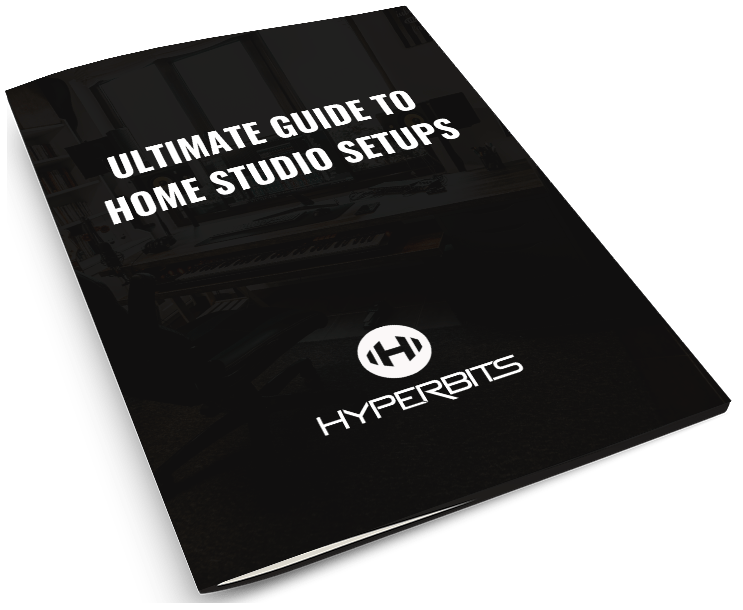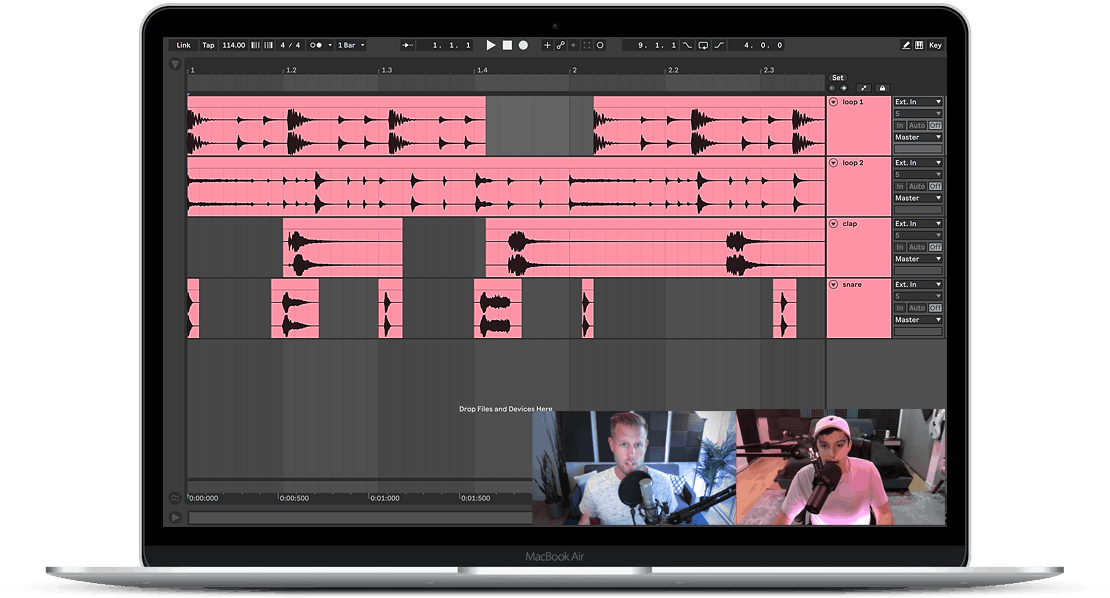Digital vs Analog Sound: Can You Tell The Difference?
“We are analog beings living in a digital world.”
— Neil Turok
There are endless tools to help you make electronic music. Hundreds of companies make high quality plugins tailored towards any type of sound. You would think that as the technology behind VSTs continues to develop, analog gear would simply fall by the wayside.
But, this just hasn’t happened. Look at the studios of today’s top-level producers: in many (or even most) cases, you’ll find some kind of analog gear. Maybe it’s a classic synth, hardware compressors and EQs, or some guitars and drums. Truth is, analog sound is all over electronic music today, and it likely will be for the foreseeable future.
Today’s top-level producers clearly think there is still a difference between digital and analog sound. But what is that difference? And more importantly, can you tell the difference?
That’s what this article is all about. I’m breaking down the difference between analog and digital sound, with a focus on synthesizers. Plus, I’m going to make sure you walk away from this article knowing the differences between and the benefits of both types of audio.
The Secret Key to Analog Audio
I need to start by highlighting what I think is the single most important concept in analog audio. It’s something that is essential to understanding the analog vs digital conversation, and it’s a concept that simply isn’t talked about enough.
I’m talking about Analog-Digital/Digital-Analog (AD/DA) conversion. AD/DA conversion is the process by which 1) an electrical signal is converted into a digital file (Analog → Digital), or 2) a digital file is converted into an electronic signal (Digital → Analog).
There is one reason why AD/DA conversion is so important: analog sound will only ever sound as good as the quality of the AD/DA conversion that turns it into a digital file.
Let’s break this down further: electrical audio signals run through audio cables, like the cables connecting a microphone or synthesizer to an audio interface, or the cables connecting your computer to your studio monitors.
As producers who work with DAWs, however, we work with digital files. In order to take the electrical signal from a hardware synthesizer or microphone and turn it into an audio file in our DAW, a computer algorithm converts the voltage of the electrical signal to a bunch of 1s and 0s, and ultimately creates a WAV or AIFF file. This is AD (Analog to Digital) conversion.
In other words, analog audio – or the sound quality of any analog audio source – will only ever sound as good as the quality of AD/DA conversion that is performed on it to turn it into a digital audio file. Because of this, the same synthesizer or microphone will sound DRASTICALLY different when passed through different AD/DA converters.
Most producers today use audio interfaces for AD/DA conversion. Universal Audio has taken over much of this market by offering affordable, high-quality AD/DA conversion with their Apollo interface line.
Remember: analog synths can sound amazing, but ONLY if they are passed through high quality converters.
The Great Debate: is analog or digital audio better?
Some people swear by analog gear, while others think software tools are just as good. Let’s break this down: which is the better option?
I think there are 6 parts of this debate. In the end, it’s a very close race between analog and digital synths.
1) Sound Design Possibilities
Winner: Digital
Simply put, there are greater sound design possibilities when using digital synths. Between extensive preset libraries and sound engines that step beyond the limitations of hardware synths, the palette of possible sounds you have at your fingertips is greater with digital than analog.
2) Access to Timeless Sounds
Winner: Analog
If you tried to produce a mainstage EDM record in 2023 with the sound design of Martin Garrix’s Animals, you’d be laughed out of town. But the sounds of pioneers like Jean Michel Jarre and Tangerine Dream and the soundtracks of Bladerunner and Twin Peaks are still sought after today. Digital sounds have a shelf life, whereas classic analog synths are timeless.
3) Workflow
Winner: Tie
Digital and analog offer two entirely different workflows. For some people, the ability to quickly cycle through hundreds of presets in a digital setting is a massive value-add. For analog users, physically touching an instrument is the source of all creativity and happy accidents. It’s a toss-up between digital and analog here, depending on the producer’s workflow preference.
4) Organization
Winner: Digital
From maintaining organized presets and channel strip settings to having your whole studio on your laptop, you’ll certainly be more organized when working with digital synths. Analog audio is messy, between the difficulties in saving sounds, having loads of cables and adapters to deal with, and the physical maintenance they need once in a while.
5) Sound Quality
Winner: Analog (usually, depending on genre)
I’m getting into this more below, but in general, I think analog sounds better. Only rarely do we feel the need to layer analog sounds because of the depth and richness they offer. That said, digital audio is better for certain genres, such as many styles of bass music.
6) Price
Winner: Tie
The conventional wisdom on this question is that digital synths are less expensive than analog ones. While it is true that VST synths almost always cost less than their analog counterparts, there is almost no resale value for VSTs. Analog synths, however, usually hold their value or even appreciate over time. If you spent $3,000 on VSTs five years ago, you would struggle to get much of your money back today. If you spent that much on analog synths five years ago, you’d easily get your money back, if not make a profit.
The Best Analog Emulation Synths
When it comes to the analog vs digital debate, the good news is that there is a middle ground! There are plenty of “Analog Emulation” VSTs on the market that are designed to package analog flavor into user-friendly digital synths. These are my three personal favorite analog emulation VSTs and libraries:
1. U-HE Diva
Diva is the best analog emulation VST on the market. Period. It sounds amazing and is extremely versatile. It perfectly allows you to not only recreate classic synths — like the Roland Juno 60 or the Korg MS-20 — but it also allows you to create your own synths by combining the oscillators and filters of different hardware emulations. If you are shopping for an analog emulation VST, Diva is the best choice.
2. Arturia V Collection
Next is the Arturia V Collection, a bundle of over 20 VSTs that each model a classic piece of analog gear. Arturia created these synths — like the Yamaha CS-80 and the Moog Minimoog — to be as close to the original hardware synths as possible. Looking for faithful recreations of hardware synths? The V Collection is your answer.
3. Knif Audio Knifonium
The Knifonium is a mystical synth. When it was first created and released a few years ago, Knif Audio only made 12 units. Literally. There were only 12 of these synthesizers in the world, and they garnered a legendary reputation for being the warmest and juiciest synth ever created. Knif Audio more recently created a plugin version of the Knifonium. While the palette of sounds isn’t as diverse as Diva or the V Collection, I think the Knifonium behaves more like a real hardware synthesizer than any other VST.
Head-To-Head Quiz: Can you tell the difference between digital and analog?
Can you tell the difference between analog and digital audio? I have 15 quiz questions below to test your knowledge, with three sounds each from basses, leads, pads, noise/FX, and drums.
In terms of the sound design of the synth patches, the analog and digital synth patches are identical in each, and the volume of each audio file is the same. The only difference is that one came from a digital synth, and the other came from an analog one.
How many can you correctly identify? (see answers at the bottom of the article)
Basses
1. Triangle Sub Bass
2. Rufus Du Sol Style Horn Bass
3. Resonant Square Deep House Bass
Leads
1. Simple Distorted Saw Lead
2. Pluck Lead 1
3. 80s Lead
Pads
1. Simple Saw-Square Pad
2. Chorus Pad
3. Saw Stab
Noise/FX
1. Chorus Noise Riser
2. Noise Stab
3. Pitched Riser
Drums
1. Noisey Hi Hats
2. 808 Boom
3. 909 Snare
Final Thoughts
Quiz Answers:
Triangle Sub Bass: 1. Analog 2. Digital
Rufus Du Sol Style Horn Bass: 1. Analog 2. Digital
Resonant Square Deep House Bass: 1. Digital 2. Analog
Simple Distorted Saw Lead: 1. Analog 2. Digital
Pluck Lead 1: 1. Digital 2. Analog
80s Lead: 1. Analog 2. Digital
Simple Saw-Square Pad: 1. Digital 2. Analog
Chorus Pad: 1. Digital 2. Analog
Saw Stab: 1. Digital 2. Analog
Chorus Noise Riser: 1. Analog 2. Digital
Noise Stab: 1. Digital 2. Analog
Pitched Riser: 1. Analog 2. Digital
Noisey Hi Hats: 1. Analog 2. Digital
808 Boom: 1. Analog 2. Digital
909 Snare: 1. Digital 2. Analog








